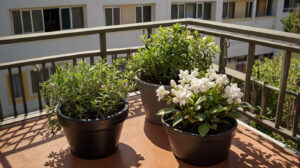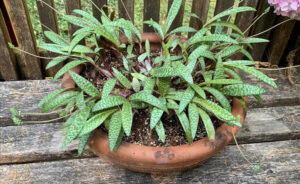
The philodendron is a beautifully elegant plant with heart-shaped leaves and a tropical appearance. Known for being low maintenance but still lush and vibrant, philodendrons are accessible houseplants for plant parents of all experience levels.
- Pros:
- Beautiful and lush foliage
- Easy to care for
- Thrives in various light conditions
- Purifies the air
- Adds a tropical touch to any space
- Cons:
- Toxic to pets and humans if ingested
- Requires occasional pruning to maintain shape
- May need support as it grows larger
In this article
- 1 Appearance of the Philodendron
- 2 Caring for Philodendron
- 3 Toxicity Level of Philodendron
- 4 Light Requirements for the Philodendron
- 5 Watering the Philodendron
- 6 Fertilizing the Philodendron
- 7 Yellowing leaves
- 8 Potting the Philodendron
- 9 Propagation of Philodendron
- 10 Growth and Development of the Philodendron
- 11 Growing Philodendron outdoors
- 12 Leggy and sparse growth
- 13 Managing pests and diseases for the Philodendron
Appearance of the Philodendron
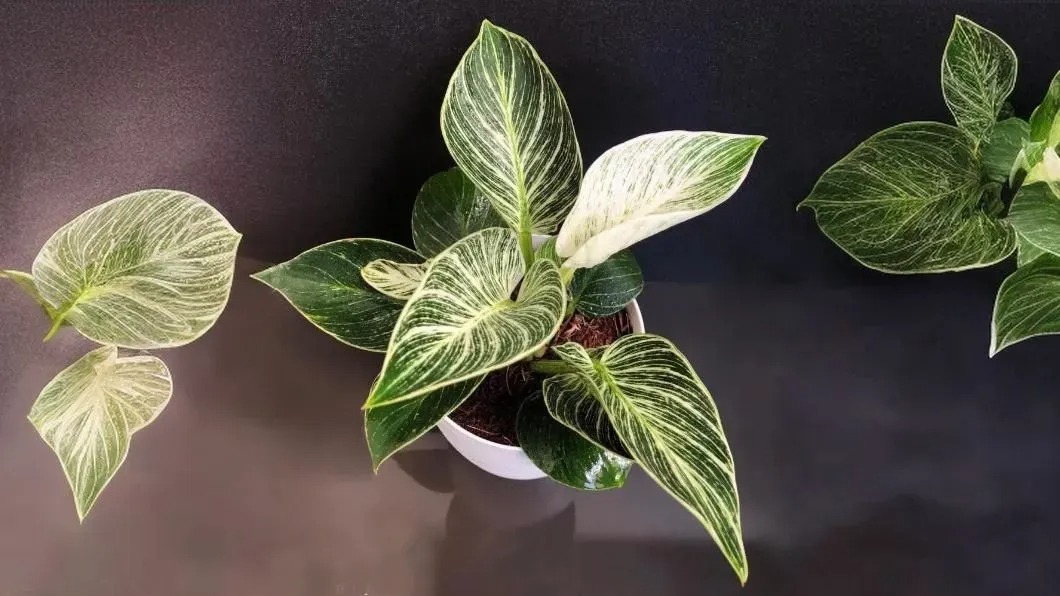
Philodendrons are known for their attractive foliage and unique leaf shapes. One of my favorite Philodendron varieties is the Philodendron Birkin. This stunning plant features dark green leaves with beautiful white pinstripes, resembling the fashion-forward Birkin bag.
Philodendron leaves can range from heart-shaped to elongated and come in various shades of green. Some Philodendron varieties also exhibit variegation, with patterns of different colors on their leaves. The size of the leaves can vary depending on the species, with Philodendron Giganteum reaching impressive lengths of up to 3 feet. There are at least 61 different philodendron variaties with a lot of variation between leaf shapes, colors and size.
Great for People who:
If you’re someone who wants to add a touch of tropical vibes to your home, Philodendron is the perfect choice. Its lush foliage and vibrant green color instantly create a tropical ambiance, making you feel like you’re in a lush rainforest.
Great for these Spaces:
The Philodendron thrives in spaces with higher ceilings. Its trailing vines and large leaves create a stunning visual impact when allowed to cascade down from a hanging planter or climb up a trellis. It’s an ideal choice for living rooms, conservatories, or any space where you want to make a bold statement with your indoor plants.
RELATED: 10 Must-Have Indoor Plants for Every Plant Lover’s Home
Caring for Philodendron
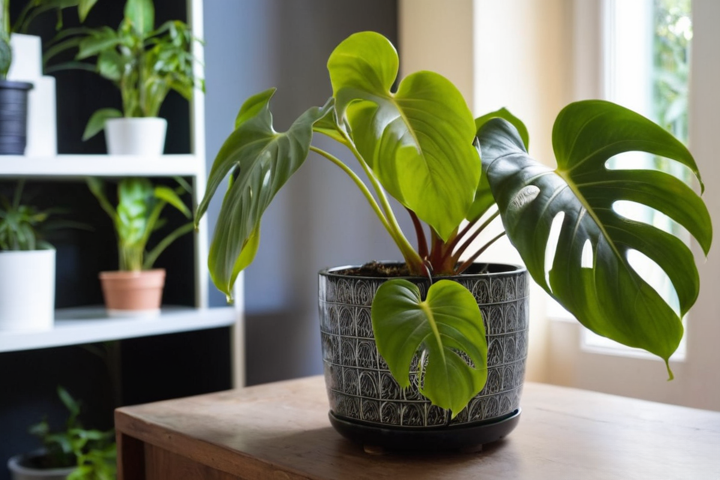
One of the reasons why Philodendrons are so popular among plant enthusiasts is their relatively low maintenance requirements. They are considered beginner-friendly plants, making them a great choice for both novice and experienced plant owners. Philodendrons require moderate care, and with a little attention, they can thrive and bring beauty to your space.
Toxicity Level of Philodendron
It’s important to note that Philodendrons are toxic to pets and humans if ingested. The leaves contain calcium oxalate crystals, which can cause irritation and discomfort when chewed or swallowed. It’s essential to keep your Philodendron out of reach of children and pets to avoid any potential health risks. If you suspect ingestion, seek medical attention immediately.
Light Requirements for the Philodendron
Proper lighting is crucial for the healthy growth of your Philodendron. While they can adapt to different light conditions, providing the right amount of light is essential to ensure optimal growth and vibrant foliage.
| Natural Light Requirements | Effect on Philodendron |
|---|---|
| Bright Indirect Light | Promotes lush growth and vibrant foliage |
| Low Light | Slower growth and smaller leaves |
| Direct Sunlight | Leaf burn and damage |
Watering the Philodendron
Proper watering is essential to keep your Philodendron healthy and thriving. While they are relatively forgiving when it comes to watering, it’s important to maintain a consistent watering routine to prevent over or under-watering.
Watering Guidelines:
- Check the moisture level of the soil by inserting your finger about an inch deep. If it feels dry, it’s time to water.
- Water thoroughly until the excess water drains out from the bottom of the pot.
- Allow the top inch of soil to dry out before watering again.
- Adjust the frequencyof watering based on the season and environmental conditions. During the warmer months, you may need to water more frequently, while in the cooler months, you can reduce the frequency.
Fertilizing the Philodendron
To promote healthy growth and vibrant foliage, it’s important to fertilize your Philodendron regularly.
Fertilizing Guidelines:
- Use a balanced, water-soluble fertilizer specifically formulated for houseplants.
- Dilute the fertilizer according to the instructions on the packaging.
- Apply the fertilizer once a month during the growing season (spring and summer).
- Reduce or stop fertilizing during the dormant season (fall and winter) when the plant’s growth slows down.
Recommended Fertilizer Dosage for Philodendron:
| Month | Recommended Dosage |
|---|---|
| Spring | 1/2 strength |
| Summer | 1/2 strength |
| Fall | No fertilizer |
| Winter | No fertilizer |
Yellowing leaves
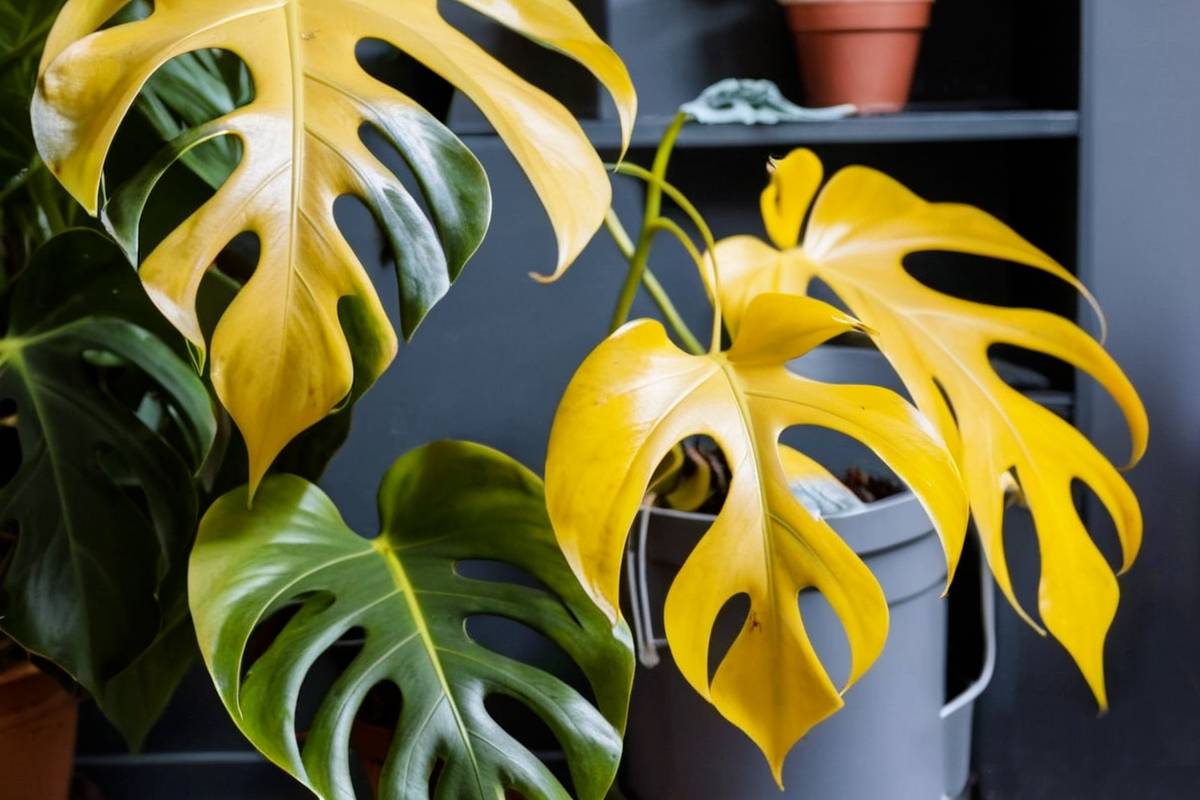
Now, let’s address a common concern among Philodendron owners: the dreaded yellowing leaves. It’s not uncommon for Philodendron leaves to turn yellow, and it can be a cause for worry. However, it’s essential to understand that yellowing leaves can be a natural part of the plant’s growth cycle. As the older leaves age and reach the end of their lifespan, they may turn yellow and eventually drop off. This is perfectly normal and nothing to be alarmed about. However, if you notice excessive yellowing or other signs of distress, such as wilting or browning, it may indicate an underlying issue that needs attention.
One possible cause of yellowing leaves is overwatering. Philodendrons prefer slightly moist soil but can suffer from root rot if left sitting in waterlogged conditions. To prevent this, make sure to check the moisture level of the soil before watering and allow the top inch to dry out between waterings. Remember, it’s better to underwater than to overwater your Philodendron.
Another factor that can contribute to yellowing leaves is inadequate lighting. Philodendrons thrive in bright, indirect light, and insufficient light can cause the leaves to lose their vibrant green color and turn yellow. If you notice your Philodendron struggling with yellowing leaves, try moving it to a spot with brighter, filtered light and observe how it responds.
Potting the Philodendron
Proper potting is essential for the health and growth of your Philodendron. Repotting allows for fresh soil, better drainage, and room for the roots to expand.
Here are some guidelines for potting your Philodendron:
- Choose a pot that is one size larger than the current one to allow for growth.
- Ensure the pot has drainage holes at the bottom to prevent waterlogging.
- Fill the pot with well-draining potting mix, such as a mixture of peat moss, perlite, and vermiculite.
- Gently remove the Philodendron from its current pot, taking care not to damage the roots.
- Place the plant in the new pot and fill in the gaps with additional potting mix, ensuring the plant is at the same level as before.
- Water the plant thoroughly after repotting to settle the soil.
Propagation of Philodendron
To start, select a healthy stem cutting with a couple of nodes. These nodes are like little growth points on the stem where leaves sprout.
Prepare a well-draining potting mix suitable for Philodendrons, like a blend of peat moss, perlite, and pine bark. Make a small hole in the mix and gently place your cutting, ensuring at least one node is buried. Press the soil lightly around the cutting to secure it in place.
Find a warm, bright spot with indirect sunlight for your pot. Keep the potting mix lightly moist, not soggy, to encourage those roots to grow. It’s like giving your cutting the perfect cozy home to settle in and flourish.
As you care for your Philodendron cutting in the potting mix, watch for signs of new growth. Once you see roots developing and fresh leaves sprouting, you can consider moving your plant to a larger pot. It’s a delightful process that lets you witness the growth and progress of your Philodendron firsthand, from a tiny cutting to a thriving plant- like caring for a tiny plant baby!
Here’s a step-by-step guide on propagating your Philodendron:
- Select a healthy stem with at least two nodes (where the leaves emerge) and a few leaves.
- Using a clean, sharp knife or shears, make a clean cut just below a node.
- Remove any leaves from the lower half of the cutting.
- Dip the cut end in a rooting hormone powder to encourage root development (optional).
- Fill a small pot with a well-draining potting mix.
- Make a hole in the soil and insert the cutting, burying the node and a portion of the stem.
- Gently press the soil around the cutting to secure it in place.
- Place the pot in a warm and bright location, avoiding direct sunlight.
- Keep the soil moist but not waterlogged.
- After a few weeks, roots should start to develop, indicating successful propagation.
Growth and Development of the Philodendron
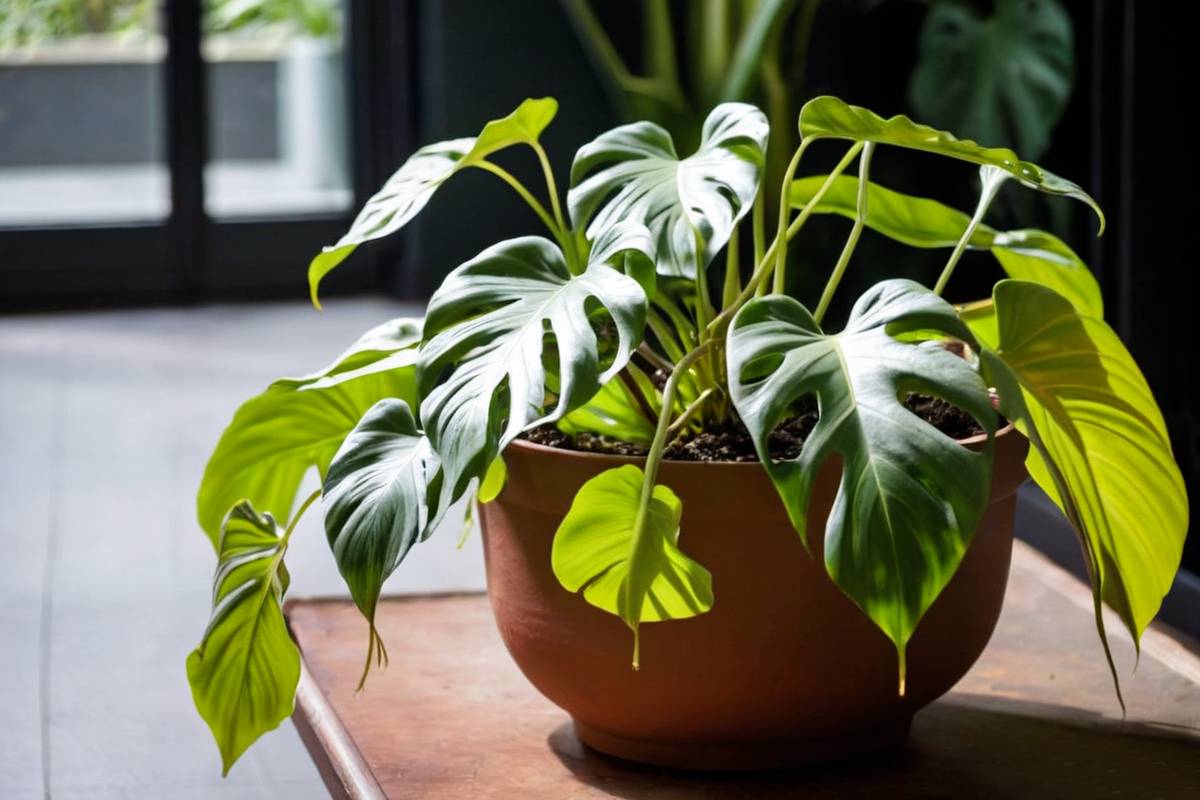
Philodendrons are relatively fast-growing plants when provided with the right conditions. Optimal growth and development require attention to factors such as light, humidity, and temperature.
- Light: Provide bright, indirect light for your Philodendron to ensure healthy growth. Avoid direct sunlight, as it can scorch the leaves.
- Humidity: Philodendrons thrive in higher humidity levels. You can increase humidity by misting the leaves regularly or placing the plant on a tray filled with water and pebbles.
- Temperature: Philodendrons prefer temperatures between 65-85°F (18-29°C). Avoid exposing them to cold drafts or extreme temperature fluctuations.
- Best Time of Year to Grow Philodendron in the United States: Philodendrons can be grown year-round in the United States, but they tend to thrive during the warmer months of spring and summer when the temperatures are more favorable for growth.
- Cleaning: Dust can accumulate on the leaves of your Philodendron, hindering its ability to photosynthesize. Wipe the leaves gently with a damp cloth or use a soft brush to remove any dust and keep the foliage clean and healthy.
Growing Philodendron outdoors
Now, let’s address a question that often arises when discussing Philodendrons: “Can I keep my Philodendron outdoors?” The answer depends on your climate and the specific Philodendron variety you have. While Philodendrons are primarily indoor plants, some varieties can thrive in outdoor conditions, particularly in tropical and subtropical regions.
If you live in an area with a warm and humid climate, you may be able to grow your Philodendron outdoors year-round. However, it’s essential to consider the specific light and temperature requirements of your Philodendron variety. Some Philodendrons prefer bright, indirect light and can suffer from leaf burn if exposed to direct sunlight for extended periods. Additionally, cold temperatures can be detrimental to Philodendrons, so if you live in a region with harsh winters, it’s best to bring your Philodendron indoors or provide adequate protection during the colder months.
When transitioning your Philodendron outdoors, it’s crucial to acclimate it gradually to prevent shock. Start by placing it in a shaded area for a few hours each day, gradually increasing the exposure to sunlight over a period of weeks. This will allow the plant to adjust to the outdoor conditions without experiencing stress.
Remember, each Philodendron variety has its own unique requirements, so it’s essential to research and understand the specific needs of your plant before deciding to keep it outdoors.
Leggy and sparse growth
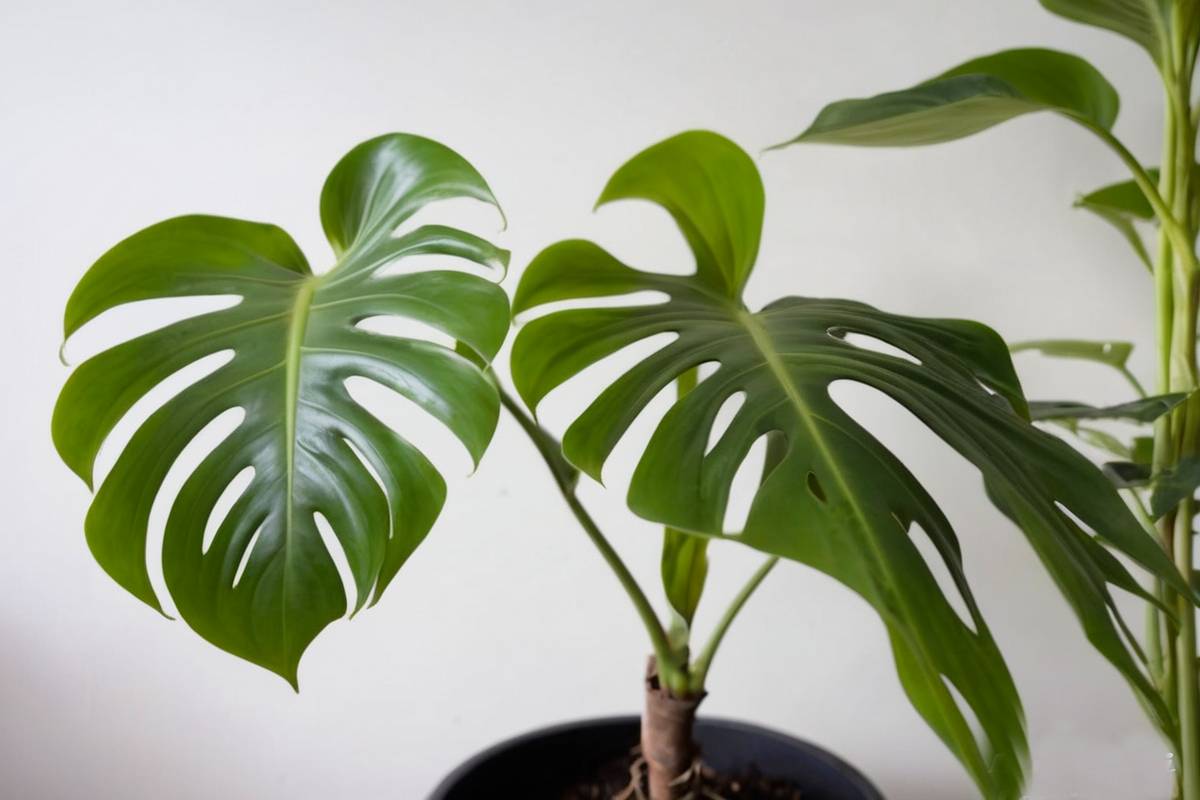
Now, let’s address a concern that many plant enthusiasts have: “How do I prevent my Philodendron from becoming leggy and sparse?” Philodendrons are known for their lush and bushy growth, but sometimes, they can become leggy and sparse, with long stems and sparse foliage. This can be caused by several factors, including inadequate light, overwatering, or lack of pruning.
To prevent your Philodendron from becoming leggy, it’s crucial to provide it with the right amount of light. As mentioned earlier, Philodendrons thrive in bright, indirect light. If your Philodendron is not receiving enough light, it will stretch towards the nearest light source, resulting in elongated stems and sparse foliage. Consider moving your plant to a brighter location or supplementing with artificial grow lights if natural light is limited.
Overwatering can also contribute to leggy growth in Philodendrons. When the soil is consistently wet, the roots can become waterlogged, leading to weak and elongated stems. Ensure that you’re allowing the top inch of soil to dry out between waterings and that your pot has proper drainage to prevent water from sitting in the bottom.
Pruning is another effective way to promote bushier growth in Philodendrons. By regularly trimming back leggy stems, you encourage the plant to produce new growth from the nodes, resulting in a fuller and more compact appearance. When pruning, make clean cuts just above a node or leaf to encourage new growth in that area.
In addition to these measures, providing your Philodendron with proper care, including regular fertilization, adequate humidity, and well-draining soil, will contribute to its overall health and prevent leggy growth.
Managing pests and diseases for the Philodendron
While Philodendrons are generally resilient plants, they can occasionally fall victim to pests and diseases. Here are some common issues you may encounter and how to manage them:
- Mealybugs: Remove mealybugs by wiping them off with a cotton swab dipped in rubbing alcohol. Repeat the process until all the pests are gone.
- Spider Mites: Rinse the leaves with a strong stream of water to dislodge spider mites. Use insecticidal soap or neem oil if the infestation persists.
- Aphids: Use a solution of water and mild dish soap
MORE READING: 76 Types of Philodendron to Grow Indoors
Frequently asked questions
Can I grow my Philodendron in low light conditions?
While Philodendrons can tolerate lower light conditions, they thrive in bright, indirect light.
How often should I fertilize my Philodendron?
Philodendrons benefit from regular fertilization during the growing season, typically from spring to fall.
Are Philodendrons toxic to pets?
Yes, Philodendrons contain calcium oxalate crystals, which can cause irritation and discomfort if ingested by pets.
How do I revive a wilting Philodendron?
If your Philodendron is wilting, it’s usually a sign of underwatering or root rot. Check the moisture level of the soil and adjust your watering routine accordingly. If root rot is suspected, remove the plant from its pot, trim away any affected roots, and repot it in fresh, well-draining soil.
Can I place my Philodendron near an air conditioner or heating vent?
Philodendrons prefer stable temperatures and moderate humidity. Placing them near air conditioners or heating vents can expose them to fluctuating temperatures and dry air, which can be detrimental to their health.
I hope this article has provided you with valuable insights into the world of Philodendrons and their care. Remember, each Philodendron is unique, and it’s essential to observe and understand the specific needs of your plant.
Happy gardening!




